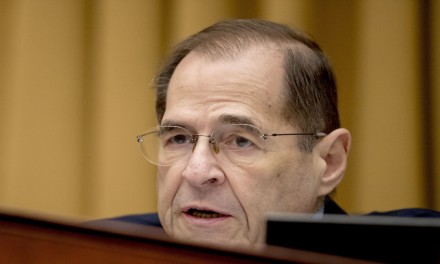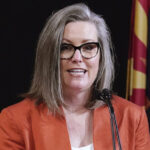President Joe Biden’s Fiscal Year 2024 (FY24) budget request seeks $73.3 billion for the Department of Housing and Urban Development (HUD), a $1.1 billion increase from its FY23 budget, and calls for a dramatic boost in affordable housing allocations over the next decade.
HUD’s proposed spending plan incorporates annual budget requests from 16 offices within the department, the Federal Housing Administration (FHA), and the Government National Mortgage Association (Ginnie Mae).
Among the priorities cited in the budget request is to distribute $104 billion in “mandatory affordable housing investments” over the next 10 years to create dedicated funding and tax credits “to tackle the nation’s housing affordability crisis by making a historic investment in lowering housing costs,” according to HUD’s 42-page FY24 Budget Brief.
Other budget request priorities include $32.7 billion for HUD’s Housing Choice Voucher Program to help an additional 180,000 low-income families; $3.7 billion to assist domestic violence victims, vulnerable youth, and human trafficking victims find housing; and $2.3 billion for “investing in critical staffing and information technology needs.”
HUD’s budget request also highlights a $752 million proposal to support energy improvements; $410 million to “remove dangerous health hazards from homes”; $90 million for “Fair Housing” programs; and revisions to the “improve the transparency” of the Community Development Block Grant–Disaster Recovery Program (CDBG–DR).
During an hour-long April 20 hearing before the Senate Appropriations Committee’s 15-member Transportation, Housing and Urban Development Subcommittee, HUD Secretary Marcia Fudge called on the Democrat-controlled Senate to ensure that the Republican-held House understands requiring Biden’s FY24 budget request conform to FY22 funding levels is a fruitless, rhetoric exercise certain to be DOA in the upper chamber.
“Our programs touch every community in every town in every state but most of all, they help people, they help families from all walks of life,” she said.
“I understand budgetary constraints, but I would ask we not balance the budget on the backs of poor people, and vulnerable youth, and seniors.”
Senate: GOP Budget Reversion DOA
Asked by Sen. Patty Murray (D-Wash.) about how the still-vague House GOP plan to revert to FY22 funding levels and cap future annual budget increases at 1 percent—which would essentially kill HUD’s proposed $104 billion, 10-year affordable housing fund—would affect her department, Fudge said she could envision numerous immediate impacts.
“We know that if we go to the ’22 levels, we would lose 350,000 vouchers and be well over $1 billion short in rental assistance contracts for 87,000 affordable units,” she said. “Because we could not meet our obligations, we would not be able to serve about 50,000 people” in local community homeless programs.
Fudge said the spending request for $1 billion more than last year is a “modest” increase considering the inflationary pressures on land and interest rate increases imposed by the Federal Reserve.
“Things go up. Rent goes up. Prices go up. If we cannot meet the inflation pressures of today, we lose out everywhere,” she said.
If FY22 funding levels were imposed, Fudge said HUD “would probably have a hiring freeze and have to lay people off,” which would be the opposite scenario of the one envisioned in its proposed budget where most of HUD’s agencies receive funding to bolster staffing.
Without more people, she said, HUD “just can’t function the way we should because we wouldn’t have the resources we need” to process applications, herd permits through approvals, and coordinate with builders in developing multi-family affordable housing projects and mortgage assistance programs for middle-income families.
“There is an affordable housing crisis in this nation, a serious challenge for us all” that will require “a whole of government approach” to address, Murray said, calling House Republicans’ FY22 proposal an admission that “we have a problem and we will not be addressing it.”
Rising Rural, Youth, and Senior Homelessness
Senators asked Fudge how HUD is tailoring assistance programs to adjust to trends in homeless populations, which included more “unsheltered” people subsisting in rural areas, and more homelessness among youth and seniors.
Sen. Cindy Hyde-Smith (R-Miss.) said while homelessness in big cities and, especially recently, on the West Coast garner a great deal of attention, “given the numbers, not unreasonably so,” it is “easy to lose sight of the challenges in rural areas, easy to undercount the numbers.”
She said homelessness in rural areas, which on average increased a marginal 0.3 percent annually, has increased by 6 percent each year since 2020.
“What are you doing to show we are equally committed to address homelessness in underserved areas?” Hyde-Smith asked.
“We are very, very keenly aware of the problem in rural communities,” Fudge replied, noting there is $66 million in grants to address homelessness in rural areas in HUD’s FY24 budget request.
Sen. Chris Coons (D-Del.) said, “Combating homelessness is a lifelong passion of mine.”
“Youth homelessness is on the rise. I hope that we can, and will, do more to combat youth homelessness.”
“Youth homelessness,” Fudge said, “people did not realize the gravity of it until the last few years.”
Sen. Susan Collins (R-Maine) said one way to lessen youth homelessness is to fix an inadequate foster care system.
“Young people,” especially those “aging out of foster care” are a growing continent of homeless populations in communities across the country, she said.
“At 18, you are out of the foster care system. Even if you are still in high school, your assistance is cut off. That breaks my heart,” Collins said.
“These are young people, who have already gone through a difficult situation. To find themselves no longer having these services … is very sad to me.”
Collins said another distinct component of the homeless population across the nation “is the growing number of older adults who are unsheltered.
“We’re seeing people who are homeless who are over age 50, even over 65, and that is the change in the composition of the unsheltered population that really concerns me.”
For some reason, HUD’s data “doesn’t focus on that older group,” she said, calling on Fudge to provide “more data so we can figure out what is going on with that older group.”
Data exists—and so do solutions, Fudge said.
In 2020, she said, 17.9 percent of the homeless population nationwide was over 65, and 30 percent of unsheltered people regarded as “chronically homeless” were seniors.
“We don’t have enough senior housing. We don’t have enough housing where people can age in place. They are being forced out and pushed onto the street,” Fudge said.
“The answer is more senior housing, more affordable housing.”



















“Our programs touch every community in every town in every state but most of all, they help people, they help families from all walks of life,”
But above all the homeless multi-millions of illegal immigrants that this treasonous woke Biden administration is importing and supporting.
Note that EVERYTHING that this traitorous, destructive, unethical, immoral, woke, socialist Democrat Party is involved in is designed to destroy this U.S.A. and turn it into a Socialist Democrat Party Dictatorship,
Not every Community. I grew up in a poor white area no help ,no public housing , no investment in the area.
WORK ON OUR own homeless, before we give ONE RATS BUTT about illlegal INVADERS!
Too slow Joe wants to spend $100 billion to fix a housing crisis he created himself by allowing 4-5 million uneducated, unskilled illegal aliens to enter the US with no established housing in place to sleep in but tents, which when socialists take over are the only thing their people can afford in the Helter, Skelter fall-out Shelters offered by the economic failures of the Socialist state of economic nuked Democrat run cities. With the rapidly Biden created $30 trillion rising American national debt, Joe now wants to $100 Billion more mortgage further the futures of our children and grand children to avoid creating more of the very skid row drug infested streets and parks of the Democrat run cities they created themselves? TREASON, must be their REASON. There is no other sane explanation. Homelessness in America is primarily a problem of drug use, and you can thank our Fentanyl, Cocaine, Heroin importing, look the other way border crime denying Biden Crime family for that one as well. Social dependency may work well for the empowerment of the Democrat party of social dependency, but it is killing America’s very ability to SELF-govern, which is indeed the end game intentions of the WOKE aristocracy who intend to rule in their Democrat party created unworkable American Idiocracy.
I can’t afford any more government help.
Neither can anyone else!